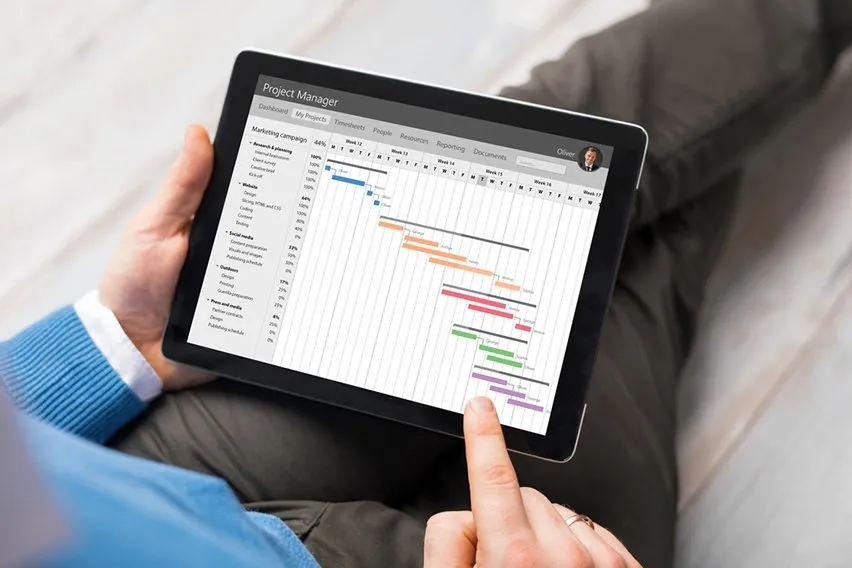Asana Pros and Cons: Top 4 Advantages & Disadvantages

Project management is an integral part of any business. If you’re a project manager, you’re used to being swamped with the oversight of complex projects. Your business may benefit from a project management tool if you find it difficult to keep up with everything. In recent years, technology has allowed for plenty of project management and collaboration software, to be developed and released.
One of the most popular project management tools is Asana. This project management software is a powerful tool that’s easy to use. Many businesses have benefited from the team collaboration and integration of the software. But is it right for your business? Keep reading to learn about the 4 advantages and disadvantages of Asana!
Here’s What We’ll Cover:
4 Disadvantages of Using Asana
What Is Asana?
Asana, as earlier described, is a powerful project management tool. It became very popular due to its ruthless social marketing campaign, and has seen a lot of support since its creation. It describes itself as one of few complete project management tools available on the market. While that might be how it’s been described, it has some mixed reviews. Some users don’t find that it’s a complete tool, and that it lacks some much desired features.
That being said, it is a very user-friendly program. Most people can pick it up within minutes. Additionally, it is a great task management software. Lists of tasks and task levels can be assigned easily. For more specific information about all of the good and bad about Asana, see our specific comments below.

4 Advantages of Using Asana
Asana has great reviews for a reason. Check out the following 4 reasons that Asana may be right for your business.
1. Easy to Use
Asana’s user interface ultimately leads to a much better user experience. It has been thoughtfully designed and as such it is highly intuitive. Their simple user interface paired with the intuitive design lets users navigate Asana easily. An easy-to-use program is better than the most powerful tool if it’s difficult to navigate.
2. Expansive Integration
Asana prides itself on being well-integrated. This covers any gaps that the program itself has. Asana integrates with many other project management apps, such as Google Drive, Microsoft Teams, and Slack. This means that Asana has all of the bases covered, as long as you do.
3. Collaboration Focused
This project management tool is heavily focused on collaboration. As a collaboration tool, Asana lets users invite others to their digital workspace. It also alerts collaborators when any changes are made to tasks within the program. The program also displays personal tasks to other team members, and allows for comments on tasks. Asana is where task management and collaboration features meet.
4. Task Management
Task management in Asana is organized and efficient. The overview that it allows users to have on all tasks is extensive. It lets users prioritize tasks with ease. With assigned tasks and real-time information, the task management in Asana is unrivaled by most.
4 Disadvantages of Using Asana
Where there’s good there’s also bad. While Asana may be a great project management tool, it does have its faults.
1. No Time Tracking Features
While this is a project management tool that’s focused on task management, it lacks any way to track time. Time tracking capabilities are common among most project management software options. Asana’s lack of one is its biggest weakness, by far.
2. Requires Some Experience
While Asana is easy to use, it does require some experience to use it. Many project managers like Asana because it feels familiar. However, that’s only because it feels like prior programs, as well as old project management techniques. For people completely new to project management, it can be difficult to master.

3. Too Many Features
Options are always great, except when they aren’t. Asana has too many features associated with tasks. Because of this, it can make even simple tasks feel a bit overwhelming. Sometimes, less is more. The same can be said of project management tools.
4. Assignments Are Limited
Surprisingly, Asana’s task assignment features are lackluster. Only one user can be assigned to a task at any given time. For a team collaboration tool, that’s one mighty pitfall. Multiple people may need to work on the same task, but using Asana will force you to create multiple tasks. This can also lead to confusion about the amount of work left in a project.
Key Takeaways
While Asana is an incredibly powerful tool, it does have its flaws. The main application for Asana is for small businesses. When you start getting too large in size, Asana starts to become convoluted. Hopefully this article helps you decide whether or not Asana is right for your business!
We have plenty of other articles just like this over on our resource hub. Be sure to visit it for more information!
RELATED ARTICLES

 What Is a Project Timeline and How to Create It in 7 Steps
What Is a Project Timeline and How to Create It in 7 Steps 5 Best Asana Alternative for Project Management
5 Best Asana Alternative for Project Management Freedcamp Vs Asana: Feature & Pricing Comparison
Freedcamp Vs Asana: Feature & Pricing Comparison Trello Vs Meistertask Management Tool Comparison
Trello Vs Meistertask Management Tool Comparison Asana Vs Basecamp: Which One Is Better?
Asana Vs Basecamp: Which One Is Better?